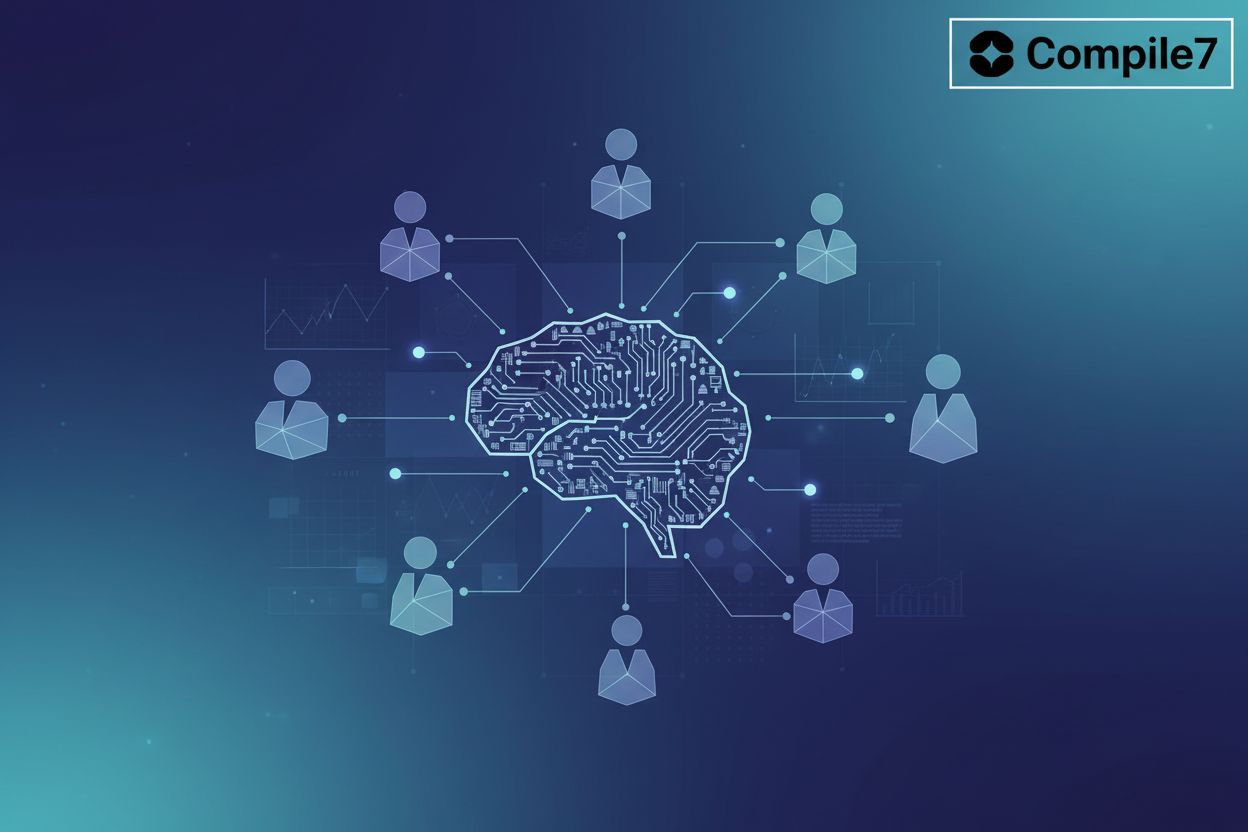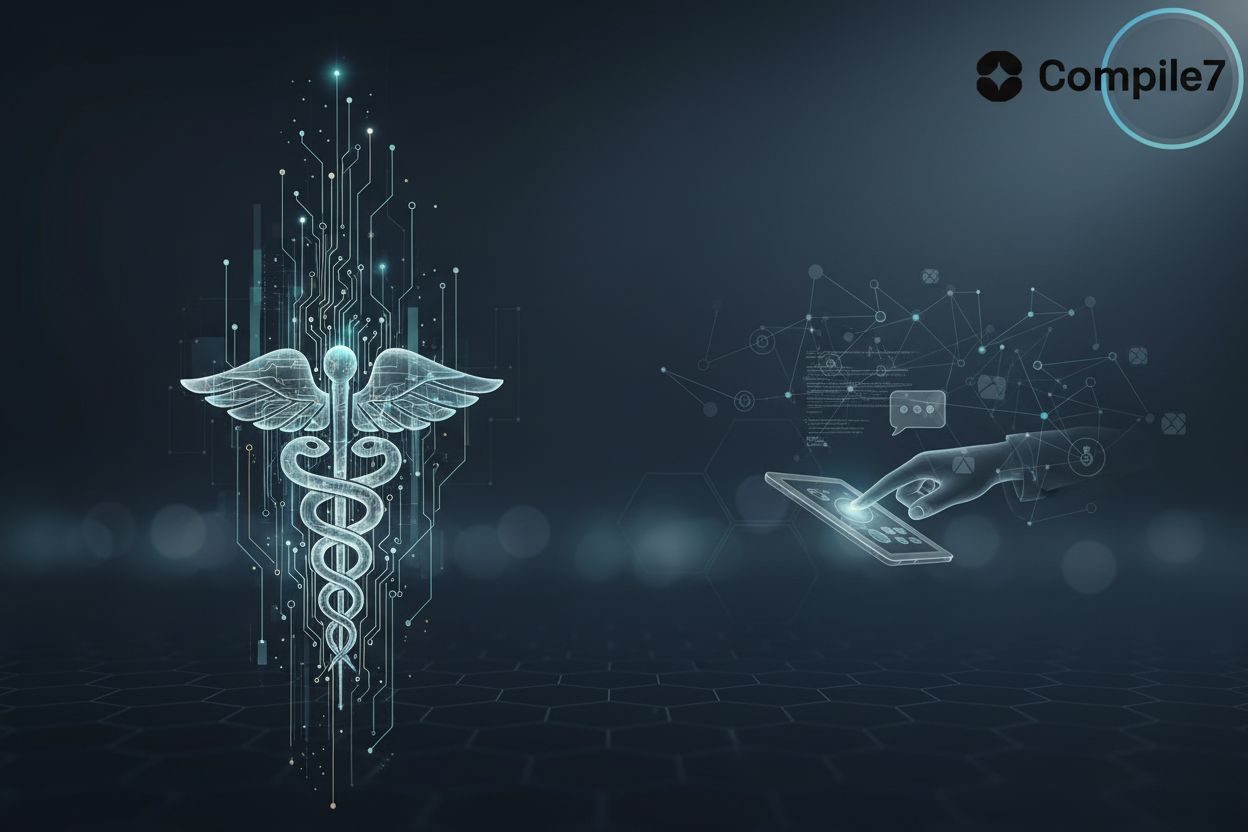Current Trends in Artificial Intelligence Development
TL;DR
Generative AI: Beyond the Chatbot Hype
Okay, so generative ai, right? It's not just the chatbot du jour anymore. I mean, remember when everyone was making a big fuss about them? Seems like ages ago!
These days, it's more about how companies are actually using it. Not just playing around. And I'm talking real business processes, not just fancy demos.
- Content Creation and Product Design: Companies? They're weaving generative ai right into their workflows for cranking out content and designing products. Think faster blog posts and ai-generated product mockups.
- Measurable Results: The focus is shifting, see? It is shifting towards things we can actually measure. Like, how much faster can we make content, and how much more engagement are we getting?
- Training on Enterprise Data: Businesses are, like, feeding these models their own data. That way, the ai sounds more like them, and less like some generic robot. This is a big deal!
E-commerce brands? They are using genai to whip up product descriptions like crazy. It's boosting conversions and, get this, cutting their workload by, like, a ton. Some reports suggest workload reductions of up to 60% in certain e-commerce contexts, for example, with product descriptions.
So, all this generative AI buzz is having a knock-on effect.
- Increased Demand for Customization: People want ai and machine learning software development that plays well with their existing stuff. And that means integrating generative ai into the platforms they already use.
- Domain-Specific Tools: Businesses are also after those domain-specific tools. You know, the ones that really get their industry. That's where custom ai model development comes in.
- Rapid Experimentation: Furthermore, rapid experimentation is key. ai POC & MVP frameworks are the name of the game, running these things to see what's worth pursuing.
"The AI market is expected to reach $1.81 trillion by 2030" GrandViewResearch - a sign that this isn't just a fad.
So, what's next? Well, all this is just the tip of the iceberg. As ai gets even more baked into our workflows, expect even more demand for solutions that are, well, less "out-of-the-box" and more "made-just-for-us".
Agentic AI: The Rise of Autonomous Task Completion
Agentic AI is more than just a buzzword; it's about handing over the reins to AI to complete tasks independently. Imagine AI agents scheduling your meetings, analyzing complex reports, and even triggering actions based on real-time insights. Pretty cool huh?
- These AI agents are designed to make decisions using machine learning models, not just relying on fixed rules, which sets them apart from traditional automation. Think of it as upgrading from a simple script to a smart, adaptable assistant.
- Companies like Google and OpenAI are already diving into testing these agents across various departments. It is from finance to customer support to see where they stick.
- However, most current ai systems still need a human babysitter for high-risk stuff, where models can really screw up. For instance, an AI agent managing critical financial transactions might make a catastrophic error due to unforeseen market volatility or a subtle data anomaly, leading to significant financial losses.
So, how does this all work in practice?
As Creoconsulting notes, agentic ai—where ai is playing a more active, goal-directed, and autonomous role in performing tasks—will become a higher priority as organizations seek to find ai solutions that can demonstrate a higher return on investment.
Here's a few examples:
- Monitoring dashboards: AI agents can keep an eye on business dashboards, flagging anomalies that need attention.
- Scheduling bots: They can resolve those never-ending calendar conflicts automatically.
- Customer service: AI agents can summarize customer tickets and even respond, saving support teams a ton of time.
The rise of agentic AI is all about finding solutions that boost efficiency, improve quality, and increase customer satisfaction. As AI continues to evolve, expect these agents to become even more sophisticated, taking on more complex tasks and driving even greater returns on investment.
Domain-Specific Models: Precision Over Generalization
Alright, so you're probably wondering why everyone's suddenly so obsessed with domain-specific ai models. Well, turns out general-purpose ai isn't always the sharpest tool in the shed.
See, companies are wising up. Instead of throwing massive, general-purpose models at every problem, they're building smaller, more focused ai systems. Kinda like using a scalpel instead of a sledgehammer, y'know?
- Targeted Accuracy: These models are laser-focused on specific tasks, industries, or even individual customer quirks. This means way better accuracy and relevance, especially in fields where getting things wrong can be a big deal.
- Resource Efficiency: Smaller models? They sip resources compared to those energy-guzzling behemoths. This slashes operational costs and makes it easier to deploy ai on devices that aren't exactly supercomputers.
- Edge Deployment: Speaking of deployment, these smaller models are perfect for running on edge devices. This is a game-changer for industries where real-time decisions are crucial, like, say, self-driving cars or industrial automation. On edge devices, processing power is often limited, battery life is a concern, and connectivity can be intermittent. Smaller, domain-specific models require less computational power and memory, making them ideal for these constrained environments. They can process data locally and make immediate decisions without needing to send information back to a central server, which is vital for applications like autonomous navigation or predictive maintenance on factory floors.
Think about it: a hospital using ai to diagnose diseases. A general ai might get confused, but a model trained specifically on medical images? It's gonna be way more accurate.
Or consider a financial firm using ai to detect fraud. A generic ai might flag all sorts of innocent transactions, but a model trained on actual fraud data? It's gonna be much better at spotting the real bad guys.
So, yeah, domain-specific ai is where it's at. It's more accurate, more efficient, and, honestly, just makes more sense. The importance of explainable AI and regulatory interest will be explored in the next section.
AI Adoption Across Industries: Transformation in Action
AI is changing things up across industries, and it's not just about the big tech companies anymore. It's about how everyone, from healthcare providers to manufacturers, are figuring out how to use ai to get better at what they do. So, what's actually happening out there?
In healthcare, ai is helping doctors diagnose diseases earlier and create personalized treatment plans. For example, foundation models can analyze vast datasets of genomic information to identify potential drug targets, significantly speeding up the early stages of drug discovery.
Machine learning models can analyze medical images faster and more accurately than humans in some cases.
Natural language processing is helping extract insights from unstructured health records.
In finance, ai-powered systems are analyzing transaction patterns in real-time to spot fraudulent activities. It's like having a super-powered security guard that never sleeps, and never misses a beat.
Machine learning models detect anomalies and prevent financial crimes before they escalate.
ai is used for credit scoring and loan approvals, making credit more accessible.
In manufacturing, ai is being used for quality control and defect detection, ensuring that products are made consistently and to the highest standard.
ai streamlines supply chain operations by predicting demand and automating logistics.
ai-powered robots and collaborative robots handle repetitive tasks with accuracy and speed.
It's kinda wild to see how ai is popping up everywhere, right? Next, we'll explore why explainable ai is so important and how regulatory bodies are taking an interest.
Ethical AI and Security: Navigating the Responsible AI Landscape
Okay, so ethical ai and security – it's not just some checkbox thing, right? It's kinda like the foundation this whole ai revolution is built on. Mess it up, and well, the whole thing could come crashing down.
Regulations? They're gettin' tighter, which means companies have to really think about how they're building and using ai. Especially in fields where the stakes are high - like healthcare or hiring. In these areas, explainable ai (xai) isn't just a nice-to-have; it's a must.
- Users, plus those regulatory bodies, are demanding transparency. They want to know why an ai made a certain decision, and they want it in plain english. Explainable AI (XAI) aims to achieve this by using techniques that can reveal the inner workings of complex models, such as feature importance analysis or rule-based extraction. However, translating highly technical model logic into truly "plain English" for a layperson remains a significant challenge, often requiring careful interpretation and simplification.
Thing is, it's not just about being ethical – got to think about security, too. ai-powered scams are popping up everywhere, from super-convincing phishing emails to those crazy deepfake videos.
- That's why ai security is now a key part of any modern cybersecurity plan. Gotta protect against data poisoning, adversarial attacks, and even model leakage.
Security teams are responding by constantly monitoring stuff and using threat detection tools. It's like a never-ending game of cat and mouse, but hey, that's security for ya. We've come a long way from simple firewalls, that's for sure.
Next up, we'll look at different ai infrastructure, including chips and cloud.
AI Infrastructure: Building a Sustainable and Efficient Foundation
Okay, so "sustainable AI infrastructure" might sound kinda boring, but hear me out: it's actually pretty darn important. Are we really going to be okay with ai sucking up all the power and resources? Nah, didn't think so.
Running ai used to be this crazy expensive, energy-hogging endeavor, but thankfully, things are changing. We're seeing a real push towards efficiency, where models can achieve similar results with way less computing muscle.
- Cloud providers are stepping up big time, rolling out optimized AI chips and even custom silicon. They are also providing hybrid solutions, which typically combine on-premises computing resources with cloud-based services. This offers flexibility, allowing businesses to leverage the scalability and power of the cloud while keeping sensitive data or critical workloads on-site, and it can optimize costs and performance. This means companies can train and deploy models without maxing out their power bills or dealing with crazy latency—which, let's be honest, nobody wants.
- This is also driving demand for smaller, domain-specific models, as discussed earlier. Instead of relying on those massive general-purpose models, businesses are finding that smaller, more focused ai systems can be way more efficient for specific tasks.
So; what does this all mean in practice? Well, it's about embracing what they're now calling "green ai" practices.
Think mixed-precision computing to slash power usage and on-device inference for mobile and embedded ai. Basically, doing more with less. For example, techniques like model quantization can reduce the precision of model weights, making them smaller and faster to run with minimal impact on accuracy, thus boosting productivity without draining the planet's resources.
Companies are starting to favor models that boost productivity without draining the planet's resources. It's not just about being eco-friendly; it's about being smart with resources.
As Exploding Topics notes, the AI market is already massive, valued at approximately $391 billion. It's expected to reach $1.81 trillion by 2030 GrandViewResearch.
Ultimately, the future of ai depends on building infrastructure that is, well, sustainable. It's about finding ways to get the benefits of ai without crushing the planet or your budget.










